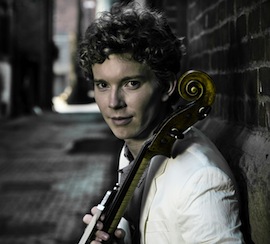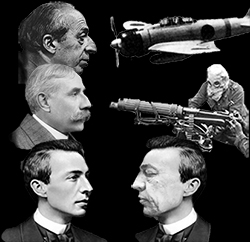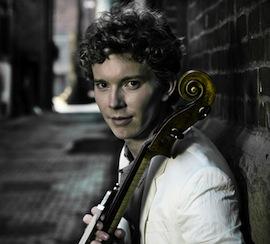
Photo by Jeremy Sawatzky
The California Symphony performed a fine concert Sunday afternoon, but I was worried at first. Robert Moody, the guest conductor, strode out just before the 1919 Edward Elgar Cello Concerto was to begin and confessed to the audience that he really didn’t know the score. I knew Elgar was insufficiently appreciated in the U.S., but surely ...
Whew! He meant the football score, the 49ers NFC championship game with the N.Y. Giants that had emptied the highways and probably produced many of the empty seats I saw in the Hofmann Theatre in Walnut Creek’s Lesher Center for the Arts. Fortunately for attending patrons, the Elgar had a much better overtime result than the 49ers did: Joshua Roman, a technical wizard of a soloist, played an encore, the Prelude to Bach’s Cello Suite No. 1.
The concert began with the conductor and the Symphony’s brass section solely on stage in a creditable if not flawless rendition of Aaron Copland’s 1942 Fanfare for the Common Man. Then “scoreless” Moody engaged the audience with an explanation of the afternoon’s theme: the impact of war on composers. It was the world wars for Copland and Elgar and the first half of the program. Copland’s Fanfare was commissioned as part of a series of fanfares by various composers by the conductor Eugene Goosens, who suggested it be titled Fanfare for Soldiers. (In the end, Copland’s title was derived from a speech by Vice President Henry Wallace.) Elgar’s concerto, according to Oxford scholar Brian Trowell, may have included music written as an elegy for a war victim, the son of a woman Elgar was engaged to marry 30 years earlier.
In a facile tie-in for the second half, it was Sergei Rachmaninov’s “war with himself,” his battle against “inner turmoil” from the failure of his Symphony No. 1, that was resolved through therapy and the success of his Second piano concerto that allowed him to write his Symphony No. 2. Moody is a charming speaker, but would have benefited from fewer generalities and some musical examples to go with his remarks.
It was wonderful to hear the majority of the concerto so expertly displayed from an artist of such promise ...Moody’s and Roman’s nonstandard take on the Elgar concerto was food for thought, and the highlight of the evening despite its issues. On the plus side, its execution from both soloist and orchestra was on a high level. Roman’s tone is outstanding, almost matching Hilary Hahn’s for the violin in terms of lack of scrapiness. The faster passages were some of the best I’ve ever heard in this concerto. Moody’s efforts at transparency and clarity were also laudable.
It was in the slower passages, especially in the third-movement Adagio, however, that Moody’s no-nonsense direction and Roman’s technique were insufficient in conveying the tragedy and longing in the music. To complete his experience in becoming a full-fledged virtuoso, the 27-year-old cellist needs to show he’s gone to soul school: His passive demeanor, lack of rubato, and holding back from the utmost intensity that this movement demands from the greatest cellists (such as the late Jacqueline Du Pre) worked against him. Nevertheless, it was wonderful to hear the majority of the concerto so expertly displayed from an artist of such promise.
Easy Does It

The absence of rubato in the Elgar was not due to lack of interest in the device on Moody’s part. The conductor experimented with the technique in many places in the Rachmaninov, heightening the work’s full-blown Romanticism. He took the greatest liberties with pacing about five minutes into the famous Adagio (the source for Eric Carmen’s pop hit I’m Never Gonna Fall In Love Again), not always to the best effect, and took too long a break marked by the composer about three-fifths of the way through the movement, making it sound like two movements. For some reason, Moody paced the first entry of the big tune in the finale too slowly, which doesn’t make it joyous enough. He did, however, lead it at standard tempo on its reprise, thank goodness.
In general, though, Moody’s interpretations were sound, his direction effective, his orchestra responsive, and his tempos on the brisk side. I particularly liked the way he held the violins back in the Adagio so the horn version of the melody Carmen exploited could be heard clearly — it gets drowned in some renditions. Principal clarinetist Jerome Simas did a fine job with a nearly two-minute solo in the Adagio, receiving deserved kudos at the conclusion.
Just as the featured composers survived their wars, the California Symphony seems to be moving through its transitional period in fine form. Score one for excellence!

